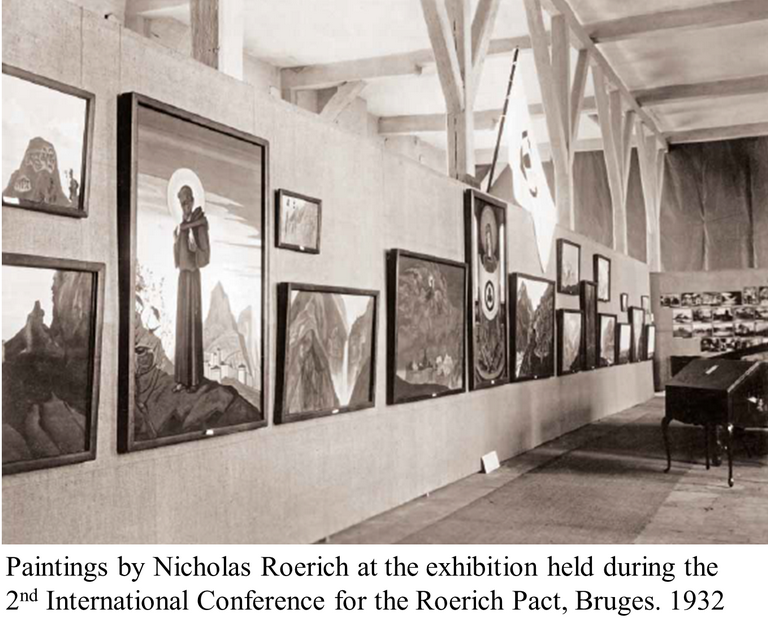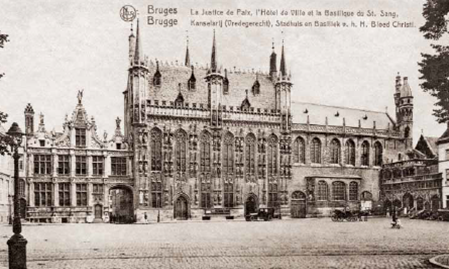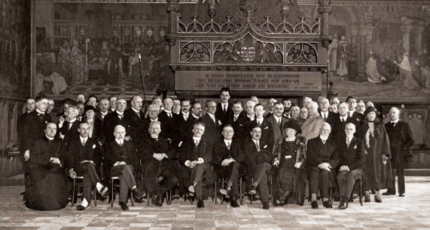History of the Roerich Pact
“My idea of safeguarding of artistic and scientific treasures first of all implied creation of an international impulse for the defense of most precious things that keep humanity alive.”
Nicholas Roerich
The Roerich Pact – the Treaty on the Protection of Artistic and Scientific Institutions and Historic Monuments – is an unique international legal document, aimed at protection of cultural property. It was initiated and created by Nicholas Roerich, the great Russian artist, scholar and thinker.
After a tour of ancient Russian cities in 1903-1904, Nicholas Roerich started actively campaigning for the preservation of cultural monuments. During the tour he created the great series of architectural studies of monuments. The artist’s admiration for the masterpieces of old Russian art was mixed with concern for their future. He submitted a report to the Imperial Russian Archeological Society on the poor condition of historic monuments. He wrote essays and articles in various journals and published protests against demolition, distortion and unskillful restoration of monuments. This tour marked the beginning of the broad public movement for the protection of culture. “It was then that the thought of the need to especially preserve the sacred folk objects was firstly formed…” wrote Nicholas Roerich.
Upon the outbreak of the Russo-Japanese War (1904–1905) Roerich spoke of the necessity of a special treaty for the protection of cultural monuments in time of war. In 1914, expressing the same idea, Roerich appealed to the high command of Russian army, as well as to the governments of the USA and France. Protesting against World War I the artist created a painting titled “Glow”. His poster “Enemy of Mankind” denouncing the destruction of the Reims Cathedral in France and the Leuven library in Belgium was distributed among the rank and file of the Russian army.
In 1915 Roerich submitted a report to the Russian Emperor Nicholas II and Grand Duke Nicholas Nikolayevich containing the appeal to take active state-level measures for the nationwide protection of cultural properties. And though the suggestion never received due support, Roerich did not renounce his idea. He returned to it in the late 1920s, having conducted his remarkable Central Asian Expedition.
In 1929 in cooperation with Dr. Georges Chklaver, Professor of International Law and Political Sciences at the University of Paris, Nicholas Roerich prepared and published in several languages the draft of the Pact on the Protection of Cultural Properties.
 In New York, Paris and Bruges Committees of the Roerich Pact and the Banner of Peace were founded to promote the ideas of the Pact. Societies in its support were established in many countries. Romain Rolland and Bernard Shaw, Rabindranath Tagore and Thomas Mann, Albert Einstein and Herbert Wells supported Nicholas Roerich’s idea. The Pact project was acquiring worldwide appeal.
In New York, Paris and Bruges Committees of the Roerich Pact and the Banner of Peace were founded to promote the ideas of the Pact. Societies in its support were established in many countries. Romain Rolland and Bernard Shaw, Rabindranath Tagore and Thomas Mann, Albert Einstein and Herbert Wells supported Nicholas Roerich’s idea. The Pact project was acquiring worldwide appeal.
In 1931 in Bruges the First International Conference in Support of the Roerich Pact took place. It discussed the plans to promote the idea of the Pact. In 1932, the Second International Conference took place in the same city. Its participants made a decision to appeal to all countries to adopt the Pact as international treaty. Twenty two countries took part in its deliberations.
The Roerich Pact was signed by 22 Latin American states on April 15th, 1935. According to the Treaty a distinctive mark proposed by Nicholas Roerich and meant to distinguish the object under protection was adopted. It is imaged as three joined amaranth spheres in a red circle at the white background. This sign has become known worldwide as the Banner of Peace.







The building in Bruges where the International Union for the Roerich Pact was located. 1930s
The Basilica of the Holy Blood in Bruges and the Altar inside it where the Banner of Peace was consecrated in 1931
Participants of the 1st International Conference for the Roerich Pact at the reception given by the Brudes municipality in the Gothic Room of the Town Hall. September 13, 1931
The exhibition of the Old Art Towns in Bruges. July-October, 1932. Postcard
Paintings by Nicholas Roerich at the exhibition held during the 2nd International Conference for the Roerich Pact, Bruges. 1932
The Article 36 of the Hague Convention for the Protection of Cultural Property in the event of Armed Conflict, based on the Roerich Pact. 1954










